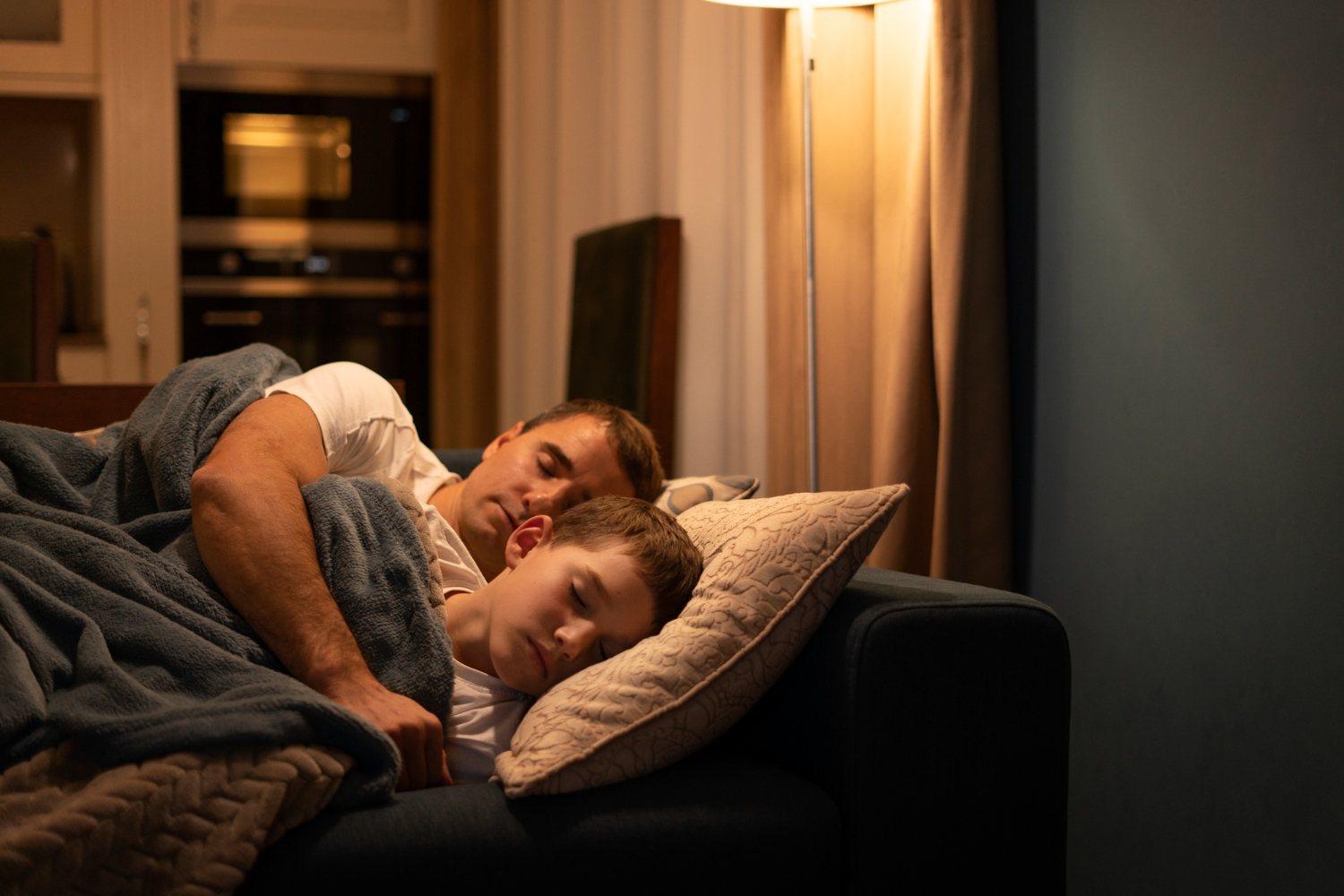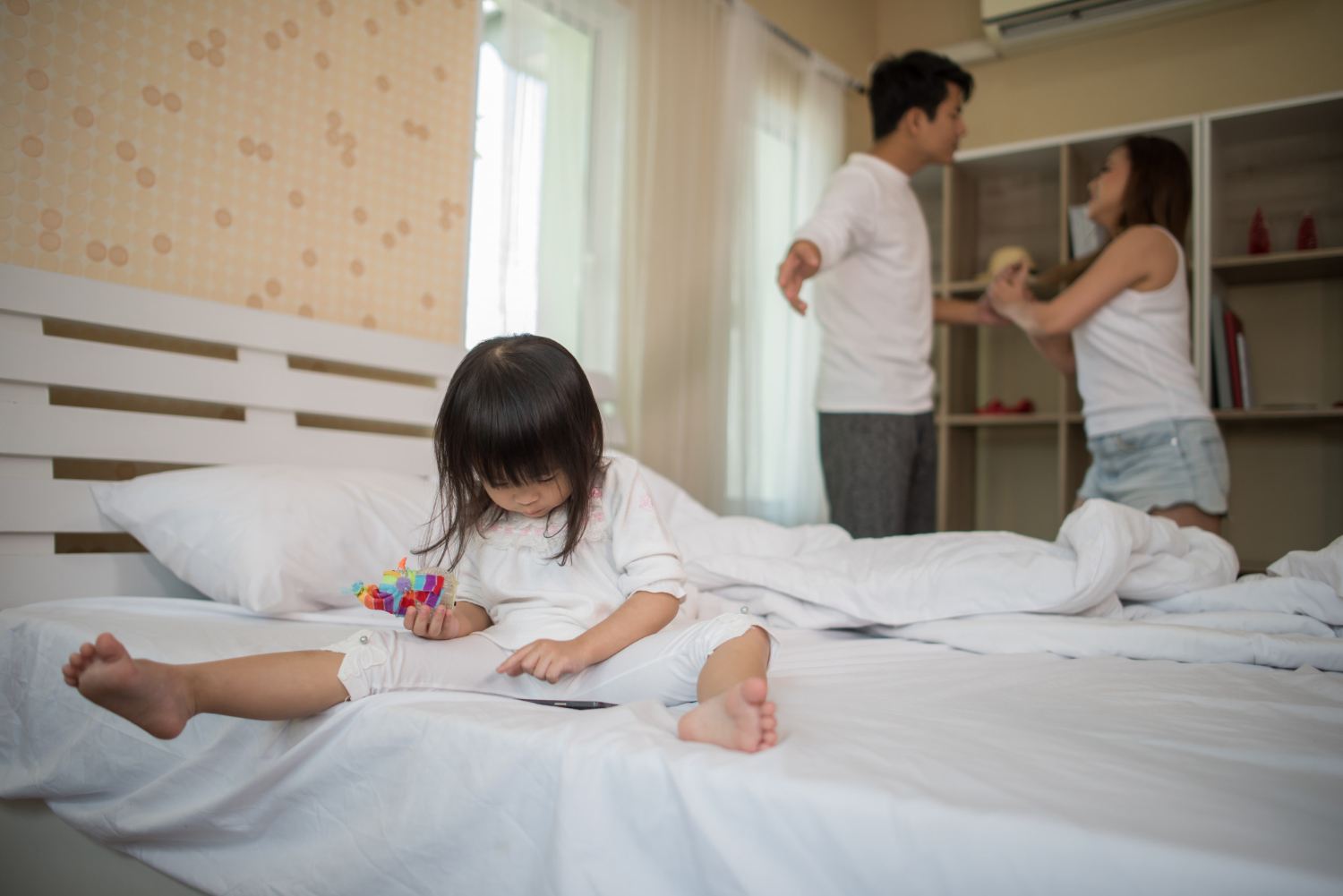One suggestion is that sleep problems in children and adolescents with autism spectrum disorder (ASD) are related to their problematic behavior during the day.
Many autistic children have difficulty sleeping. However, some problems can be solved with proper use by parents of the following strategies to improve sleep, which are suitable for children of any age, including adolescents.
When applying these strategies, you need to consider the peculiarities of family life, start with small changes, expand them over time, and remain patient and consistent.
Typically developing, school-age children often require 10-11 hours of sleep. However, many children with ASD appear to need less. It is important to keep this in mind, as putting a child to bed too early to “get more sleep” may make falling asleep harder.
Providing a comfortable sleep setting
Creating a safe, quiet sleep setting for your child is important. Wherever your child sleeps, there should be a space at night to sleep that is his/her own. This may be part of a shared bed or the child’s own bed, but it should be the same each night.
The bedroom should be comfortable. (not too hot and not too cold), quiet, and dark. If the room is too dark, add a dim night light to your child’s bedroom and leave it on all night. If there is light coming into the room from streetlights or sunlight in the morning, consider adding heavier curtains to cover the windows.
The room should be quiet at night. It is best to avoid things like the radio, television, or music when he/she is falling asleep at night. When noises like these stop during the night, it may wake your child. Some children may find ‘white noise’ or low, quiet, and consistent background sounds such as a ceiling fan or air filter soothing. Generally, there should not be noise from other siblings or from television, computers, video games, or music in nearby rooms.
Consider the environment. Children with ASD may be more aware of noises at night that do not bother other children. Things such as water running or other household noises can affect sleep. Children with ASD may have sensitivity problems to things like textures of bedding and pajamas. Try to find out if these things are affecting your child. For example, does he prefer tight or loose pajamas or light or heavy covers?
It is important that you, your partner, and other caregivers follow the same set routine.
The more regular the routine from one night to the next, the easier it will be for your child to settle to sleep at night.
Establish regular bedtime habits
Establish bedtime habits that are short, predictable, and expected. A good routine will help teach your child how to relax and get ready for sleep. The routine should include soothing activities for your child. The stability of the routine will be calming to your child each night. Avoid activities such as exciting television programs, movies/videos/electronic games, computers, loud music, or bright lights before bedtime. It is best to avoid activities like running, jumping, or roughhousing.
Start the routine 15 to 30 minutes before the set bedtime. A younger child will have a shorter routine (e.g., 15 minutes at one year), which will increase as the child grows. However, the routine should not be more than 60 minutes.
The child’s bedtime activities should occur in the child’s bedroom where it is quiet (other than bathing/teeth brushing activities), take no more than 60 minutes (usually 15 to 30 minutes), and calm the child, not stimulating. Those calming events for your child should be part of the bedtime routine habit. Stimulating events should be moved to an earlier time in the evening. For example, if your child finds bathing stimulating rather than relaxing, move this event to earlier in the evening.
A visual schedule (e.g., pictures, words, or both) helps remind them of each step (see below for an example visual schedule). This will help your child see that his/her bedtime routine will be the same events in the same order each night. A visual schedule will also assist other family members and caregivers in following the order of the routine.
Choose a Bedtime…and Keep It
As much as possible, the child should have a bedtime and wake time the same 7 days per week. Pick a bedtime that works for the child’s age and will be convenient for parents. If the child’s schedule needs to change because of new activities or family events, keep track of how this impacts your child’s sleep. You may need to develop a new schedule or go back to the schedule that worked as soon as you can.
Some children tend to get a “second wind” in the hour before bedtime and may have trouble falling asleep if they go to bed too early. If your child takes more than an hour to fall asleep, think about putting off bedtime by 30 minutes to 1 hour to try to help with sleep.
Even if your child goes to sleep late at times, keep the wake time the same or not more than one hour later than the normal wake time. Although it may seem better to let your child ‘sleep in’ and catch up on sleep, the more regular the wake time, the better sleep will be.
At the end of the day, you should not give your child heavy meals or large snacks late at night. However, a light snack (e.g., cheese, crackers, or fruit) may help your child fall asleep more easily.
Teach your child to fall asleep alone
Children and adults naturally wake up several times each night. Each time we wake up, we check out our sleep environment and quickly return to sleep. These wakings are so brief that we often do not remember them in the morning.
If your child cannot fall asleep alone, then each time he/she wakes up, it is hard to fall back asleep without your help.
How Do I Teach Them?
Just as children have learned to fall asleep with your guidance over time, you will have to teach them to fall asleep alone. This should be done gradually and over a few weeks. For example, if you usually lie down with your child at bedtime, you can change your pattern by sitting on the bed for a few nights and then sitting in a chair beside the bed. Continue sitting in the chair, but move it farther from the bed each night until you are out of the room and out of visual contact with your child. While making these changes, reduce the amount of attention you pay to your children, such as talking, facial expressions, or eye contact.
Once you are out of your child’s bedroom, if he/she is upset and not sleeping, you can wait a few minutes and then go back into the room to check. When you enter the room, make it a brief visit (less than a minute) and only give limited physical or verbal contact (e.g., a quick hug). Gently but firmly say, “It is time for bed. You are ‘OK.’ Good night,” and then leave the room.
If you need to go back into the room, wait longer each time and make each visit with your child brief. Once your child is able to fall asleep alone, then you can use the same techniques if he/she wakes in the night or before wake time in the morning.
A Tool for Teaching: Bedtime Pass
A bedtime pass (see right) is a useful tool for older children. This is a card (or other objects) that your child can present to you if he/she wakes at night. Your child may use it to trade for something brief, such as a quick hug or a drink of water.
Your child should be taught that they may only use the pass once during the night and that once it is used, it will be given to you. You will return the pass to the child the following night to use again.
Teach your child that if the pass is not used all night, it can be traded for a morning present. You can also set up a reward system. For example, every night the child does not use the pass, he/she gets a sticker. If your child collects a certain number of stickers (e.g., five), they receive a special gift. The presents can be dollar store items or a special outing with you.
Hope this helps!
Best regards,
Gayane Zakaryan, Head of Rehabilitation Services, “ArBeS” Healthcare Center




